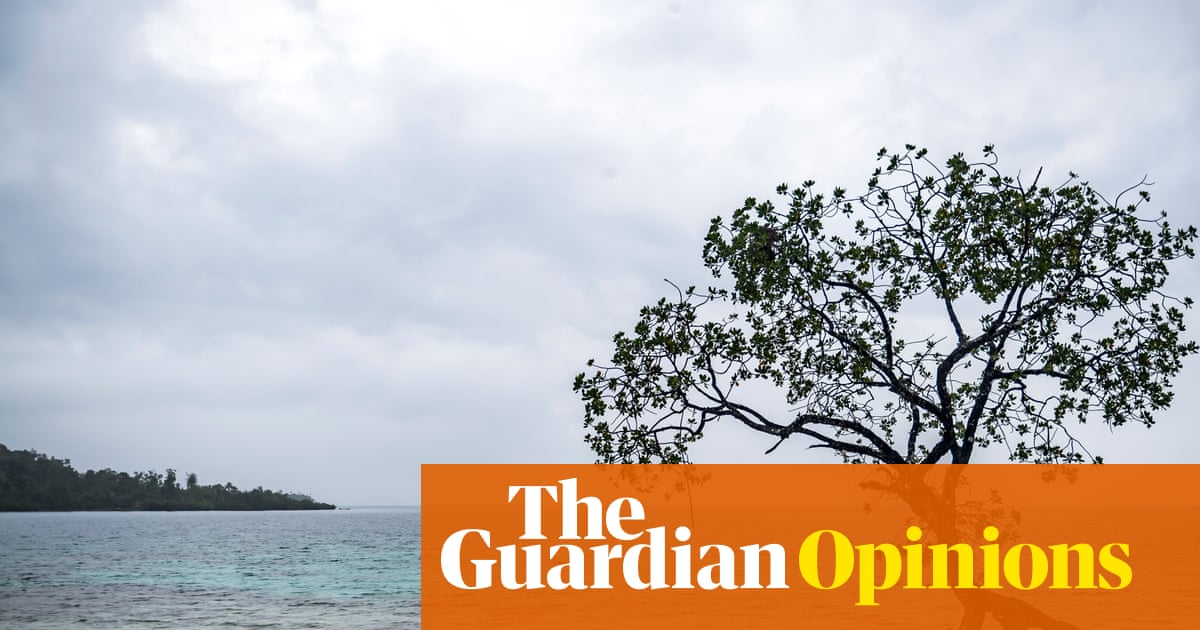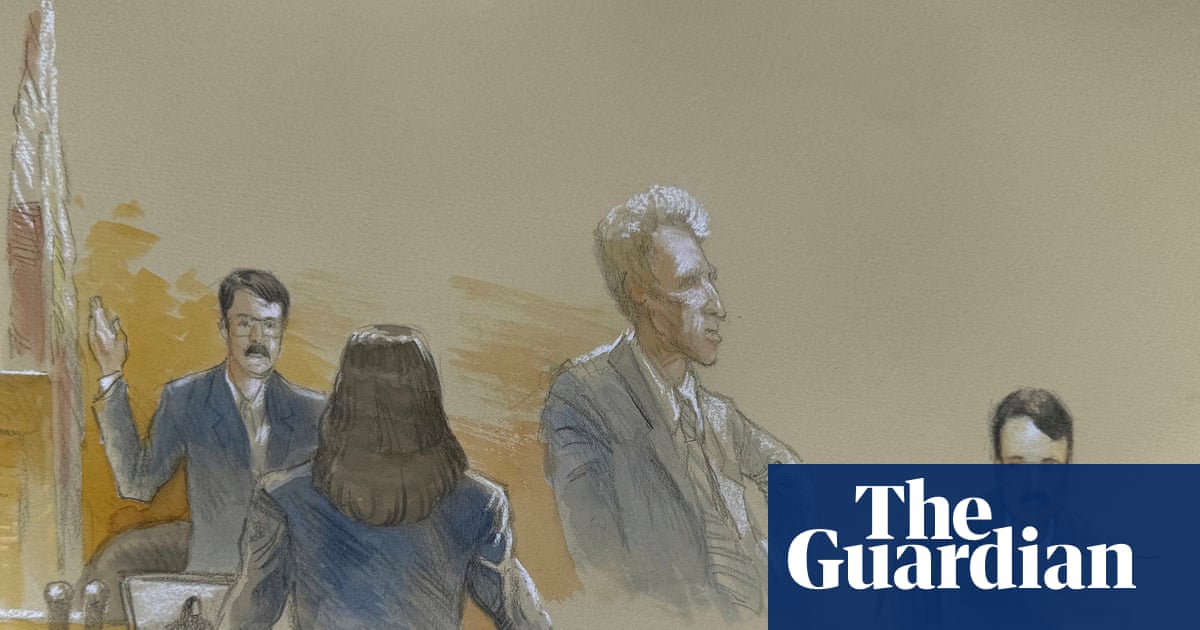It’s fair to say that no one who bought the Beach Boys debut single in 1961 would have realised they were in the presence of genius. Surfin’ sounded exactly like what it was: one of dozens of cheap, hastily-recorded singles released on a tiny independent label to cash in on the burgeoning craze for surf music, albeit a regionally-successful example of type. You might easily have expected to never hear of the band who made it again.
But the 19-year-old Brian Wilson was determined – he was the taskmaster that had relentlessly drilled his unwilling younger brothers Carl and Dennis into learning to harmonise – and a quick learner. The leap in quality between Surfin’ and its 1962 follow-up Surfin’ Safari was striking. The leap between Surfin’ Safari and Wilson’s glorious re-write of Chuck Berry’s Sweet Little Sixteen, Surfin’ USA – released nine months later – was staggering. Surfin’ USA was a pivotal record in the Beach Boys’ career, the moment where they began selling the world an idealised notion of Californian youth as a carefree, sun-kissed paradise of beauty, athleticism and unending material luxury. It was set to music that was still essentially primitive – three chords; guitars, bass and drums with only a brief splash of reedy organ for colour – but so thick with beautifully arranged harmony vocals, it felt weirdly sumptuous.
Indeed, it was so irresistible that no one seemed to notice the Beach Boys themselves bore no resemblance to the tanned teen Adonises they were singing about: the band’s heartthrob, the unreasonably handsome Dennis, was hidden away at the back of the stage behind his drumkit, leaving audiences looking at his two rather less glamorous brothers, their prematurely balding cousin Mike Love and the diminutive, jug-eared guitarist Al Jardine. Nor, as it turned out, had the Wilson brothers ever enjoyed the kind of carefree youth they sang about. Their horrendous father Murray, a thwarted songwriter, was a tyrant who, in Brian Wilson’s words “brutalized” and “terrorised” his family: most notoriously, he was reputed to have beaten his eldest son about the head so severely as a child, it left him permanently deaf in one ear. “Murray Wilson was a dick,” Mike Love once noted, flatly. “I’m glad he wasn’t my father.”
You could perhaps tell that all was not well in the Wilsons’ world by the fact that, left to his own devices, Brian Wilson kept coming up with songs that told a completely different story to the big hits. In October 1963, The Beach Boys released Be True To Your School, their third US Top 10 hit of the year, a fabulously overblown bit of swaggering Californian braggadocio, replete with cheerleader backing vocals and an arrangement that mimicked a marching band: “whatsamatta buddy, ain’t ya heard of my school? It’s No 1 in the state”. But on the B-side was In My Room: it was slow and desperately sad, filled with worries and fears and a yearning for solitude.
Wilson kept turning out the hits, each one more perfectly-turned than the last, responding to the challenged posed by the arrival of the Beatles and the British Invasion with ever-more complex vocal harmonies and increasingly sophisticated arrangements: Fun Fun Fun, I Get Around, Dance Dance Dance. But he also kept slipping songs like In My Room onto B-sides and albums: The Warmth of the Sun, She Knows Me Too Well, the extraordinary Don’t Worry Baby, on which Wilson, incredibly, managed to alchemise a song about a hot rod race into a heartbreaking, impossibly beautiful meditation on insecurity, self-doubt and the redemptive power of love.
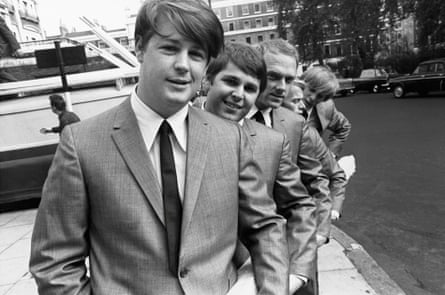
It was as if Wilson couldn’t stop his own sadness seeping out, a state of affairs that might well have been compounded by the astonishing pressure placed on him as the band’s chief songwriter, arranger and producer (between 1963 and 1965, he delivered nine albums in under three years, a workload that helped drive him to the first of a succession of nervous breakdowns). You could hear it in the breathtaking introduction to California Girls – 22 seconds of misty autumnal melancholy appended to a sunlit song about the attractiveness of women from different regions of the USAmerica – and it seemed to overwhelm him entirely on side two of 1965’s Beach Boys Today!, the first album he made after being released from touring duties. Permanently ensconced in the studio, his arrangements becoming increasingly complex and demanding – outtakes reveal his extraordinary precocity, a man barely into his 20s commanding some of America’s greatest session musicians like a general – he came up with a suite of gorgeous, sighing ballads that stands both as Wilson’s first extended masterpiece and a dry run for the following year’s Pet Sounds.
So much has been written about the latter album – his bandmates’ increasing disquiet at the turn Wilson’s music was taking, its relative commercial failure in the US, its impact on a gobsmacked Paul McCartney and John Lennon, its subsequent canonisation and regular citation as the Greatest Album Ever Made – that its story has become over-familiar, which doesn’t mean that the music on it can’t still knock you off your feet: the limpid beauty of Caroline No and God Only Knows; the impossibly thrilling moment, 52 seconds in, when I’m Waiting For the Day suddenly surges back into life; the yearning, pleading desperation that lies at the heart of I Know There’s An Answer and I Guess I Just Wasn’t Made For These Times.
Whatever the US sales figures, Wilson seemed to know precisely how good Pet Sounds was: emboldened, his production style became ever more audacious. He began experimenting with splicing different pieces of music he called “feels” together into songs, concealing the tape joins with reverb. Often the feels were deliberately recorded at different studios by different musicians, who had no idea what the finished track would sound like: no one had ever worked like this before. The 1966 single Good Vibrations lasted for three and half minutes, but took six months – and depending on whose estimate you believe, between $10,000 and $75,000 – to make. But whatever pains were staked in its recording were worth it. Good Vibrations remains not just Wilson’s masterpiece, but one of the towering achievements in all pop history. It was impossibly complex – even Wikipedia’s summary of its structure takes up over 1,200 words and contains diagrams – but its constant emotional shifts from wistfulness to charging euphoria flowed perfectly. It sounded incredible coming out of a transistor radio, and sold nearly 300,000 copies in four days in the US alone: it was a record, as one critic put it, that you could bathe in.
What happened next is a matter of record: his already precarious mental health further shaken by the LSD he’d started taking in search of even greater inspiration, Wilson abandoned the ensuing album Smile unfinished. It’s an article of faith among his devotees that had it been completed and released, it would have permanently changed the course of pop history, but listening to the version finally assembled as part of a lavish 2011 box set, you wonder if that would have been the case.
Smile was certainly filled with extraordinary music: the heart-stopping beauty of Surf’s Up; Wind Chimes’ eerie evocation of the unsettling side of the LSD experience; the album’s awesome opening sweep, from the wordless, ethereal Our Prayer to the dark, lurching rumble of Do You Like Worms? to a wilfully episodic version of Heroes and Villians that, depending on your perspective, either pushed the “feel” technique to new heights of daring or to breaking point, where the song started to sound disjointed in a way Good Vibrations simply had not.
But it also sounded absolutely nothing like the kind of psychedelia that was selling in 1967. Instead of phasing effects and backwards tapes and lyrics about peace and love there was doo-wop, yodelling, barbershop singing, ragtime, references to pre-rock and roll crooning and the cod-Polynesian Tiki culture that had swept Hollywood in the 1950s: straight-arrow American pop culture – the kind of stuff the emergent hippy counterculture dismissed as hopelessly square – filtered through an lysergic lens.
Whether Smile would or wouldn’t have been a success on release is besides the point: its abandonment in 1967 prompted a decline in both Wilson’s health and the Beach Boys’ commercial standing. They spent the rest of the decade scrabbling around trying to make up lost ground, and – increasingly – to get their former leader engaged in making music at all.
There’s a great deal to commend the Beach Boys’ late 60s albums – Wild Honey’s raw fusion of their trademark sound with soul is a delight; both 1968’s understated Friends and 1969’s 20:20 were liberally sprinkled with highlights, Wilson’s gorgeous Time To Get Alone and Wake the World Among them; his brothers Carl and Dennis were increasingly developing as songwriters in their own right. But with their resident genius only intermittently engaged, they were clearly no longer at the vanguard of pop.
Curiously, their most prescient release was the 1968 single Do It Again, an attempt to recreate their old surf music-themed sound that you might have called craven were the results not so infectiously joyous. It pre-empted the vogue for nostalgia that variously gave us American Graffiti, Grease, a rock’n’roll revival and Don McLean’s famous assertion that “the music” had died with Buddy Holly – that ostensibly more innocent era looked appealing as the 60s first curdled into darkness and violence, then turned into the grim 1970s.
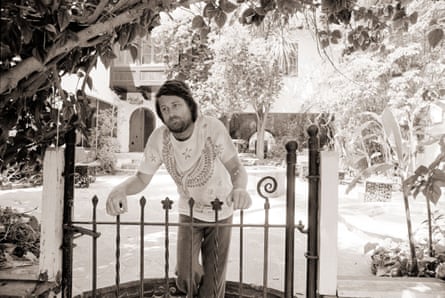
Rumours about Brian Wilson’s mental health became ever more lurid, but as the 70s began the Beach Boys made a succession of fantastic albums – Sunflower, Surf’s Up and Holland – all of which contained songs that suggested that, however unwell he was, Wilson’s creative abilities were far from extinguished: This Whole World, All I Wanna Do, Sail On Sailor and the frankly astonishing ‘Til I Die, a harrowing and surprisingly clear-eyed expression of his misery set to melody as divine as anything on Pet Sounds.
None of them sold. They eventually found a niche as a revival act, bolstered by shows that depended on their stockpile of unimpeachable 60s hits: at the height of his 70s fame, Elton John unwisely booked the Beach Boys as a support act and, by his own account, they blew him offstage. In search of a new album to match their live reputation, they employed a dubious psychiatrist called Eugene Landy, and embarked on an ill-advised Brian’s Back campaign – Mike Love even wrote a thoroughly ghastly song of the same name – which propelled 1976’s 16 Big Ones into the Top 10, but no one in their right minds would have claimed its contents were anything close to Wilson at his peak and no one who read the profoundly disturbing interviews he gave to support it could have claimed his mental health was repaired.
By the early 80s, Wilson was clearly more unwell than ever: vastly overweight, he cut a distracted, unsettling figure onstage. In desperation, Landy was re-employed, and by 1988, a svelte Brian Wilson re-emerged seemingly miraculously cured and touting an eponymous solo album. There was still plenty to be concerned about, not least the fact that Landy was now apparently Wilson’s “executive producer”, business partner and occasional co-songwriter, but it contained a couple of great songs in Love And Mercy and Melt Away: such was the general delight at Wilson’s unexpected reappearance that it got rather better reviews than its contents deserved, a pattern that was to be repeated many times in the ensuing years.
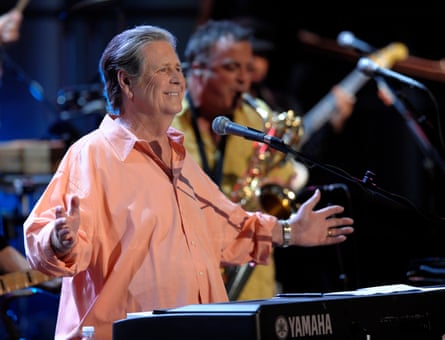
In truth, nothing on Brian Wilson’s subsequent solo albums really came close to his 60s peak, even after he was disentangled from Eugene Landy’s clutches. His best latterday work is probably the moving suite of songs that concluded the 2012 Beach Boys reunion album, That’s Why God Made the Radio, filled with intimations of aging and mortality.
But it scarcely mattered. In the late 90s, a band was assembled around him that, incredibly, could replicate the complex arrangements of his 60s productions live. They began touring, playing Pet Sounds in its entirety, to deservedly rapturous response – the shows they played at London’s Royal Festival Hall in 2002 were an utterly euphoric underlining of Wilson’s songwriting genius. It was a move that proved curiously influential: within a few years, you couldn’t move for legendary artists performing their most celebrated albums live.
They enabled him to complete a new version of Smile, provoking more shows performing the album in full. Incredible as it would once have seemed, Brian Wilson spent most of the 21st century as a touring artist, a dependable bringer of joy to festivals and high-profile shows. Occasionally, concerns were raised about Wilson’s wellbeing – he could appear disengaged and confused onstage – but in interviews he insisted that it was where he wanted to be.
It was a happy ending of sorts to a story that, at one point, seemed destined to end horribly. But, for a moment, let’s try and forget the story – the myth of Brian Wilson, if you like – entirely. Instead, just play Good Vibrations, or Don’t Worry Baby, or California Girls, or Caroline No, and marvel at what he achieved, rather than what lurked behind those achievements. Pop music as perfect as pop music is ever likely to get: music you can bathe in.

 3 months ago
122
3 months ago
122




